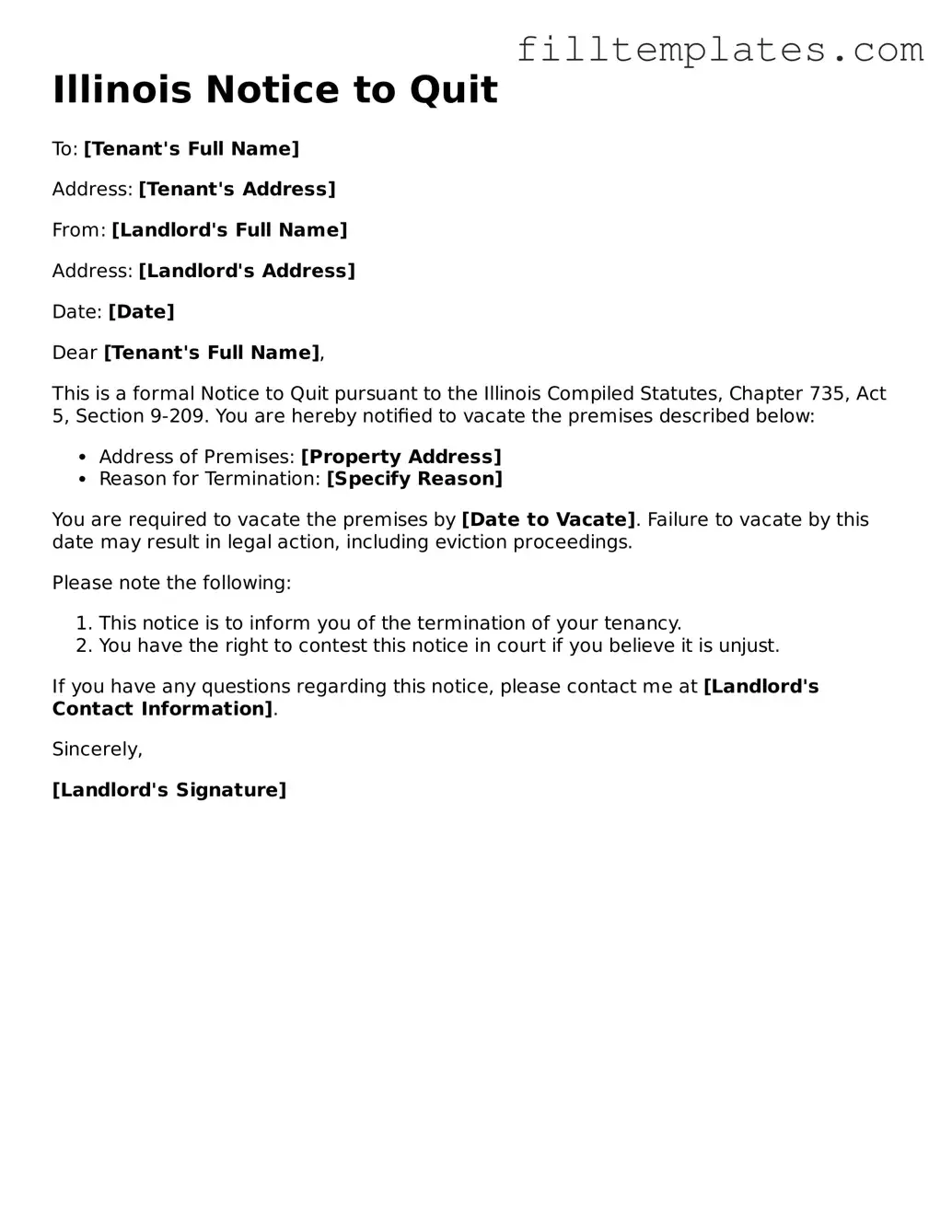Official Notice to Quit Template for the State of Illinois
The Illinois Notice to Quit form is a legal document used by landlords to inform tenants that they must vacate the rental property. This notice is typically issued when a tenant has violated the lease agreement or failed to pay rent. Understanding this form is crucial for both landlords and tenants to ensure compliance with state laws and protect their rights.
Open Notice to Quit Editor
